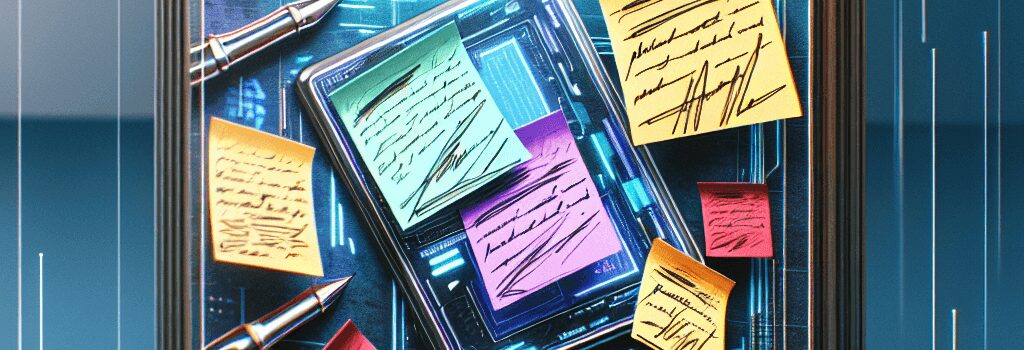Rocketbook’s Sticky Notes Transform Note-Taking

Introduction
For decades, sticky notes have been the go-to tool for quick reminders and organizational cues. Yet, as our workspaces become increasingly digital, maintaining a clutter of physical notes can be counterproductive. Rocketbook, a Boston-based innovator known for its reusable notebooks, has reimagined this classic medium. The company’s Reusable Sticky Notes integrate advanced optical character recognition (OCR) technology to digitize handwritten content, pushing sticky notes into the 21st century.
Hardware Design and Technical Specifications
The Rocketbook Reusable Sticky Notes are more than just paper; they are engineered for repeated use without compromising performance. Each kit includes 15 sticky notes, each measuring 3×3 inches, a dedicated carrying case, a microfiber cleaning cloth, and a Pilot FriXion Ball gel pen with a 0.7 mm tip. The notes are printed on a thicker, smoother paper that can tolerate repeated erasures. The adhesive used on these notes is specifically formulated to allow hundreds of reapplications while maintaining its stickiness and durability.
- Material Composition: Engineered to resist moisture, the notes leverage a unique blend of coated cellulose that enables easy wiping without fraying.
- Erasable Ink Compatibility: Optimized for Pilot’s FriXion line, these notes are designed for specific ink formulations that disappear cleanly when treated with the built-in synthetic eraser or a damp microfiber cloth.
- Adhesive Technology: Featuring a concentrated adhesive layer, the notes can be detached and re-adhered multiple times, minimizing the residue and loss of stickiness seen in conventional sticky notes.
Smart Digitization through OCR and AI
At the core of Rocketbook’s sticky note innovation is its dedicated mobile app, available for both iOS and Android. The app leverages state-of-the-art OCR algorithms for real-time handwriting recognition. When a note is scanned, the camera automatically identifies the sticky note’s boundaries, aligning the image and converting it into a machine-readable format. While the technology does not convert images directly into editable text within the app, it allows users to search their repository of notes by keywords.
The engine behind the app is built on modern machine learning models that have been trained on a plethora of handwriting samples. This ensures robust performance even for cursive or slightly off-centered scribbles. However, as with many OCR systems, the accuracy decreases with extremely messy handwriting or non-standard symbols.
Enhanced Organizational Features and Smart Lists
The Rocketbook app extends beyond simple digitization by offering tagging and organizational functionalities. Users can add custom titles to each note either manually or using a unique notation system – writing ‘##’ before and after a title triggers the app to recognize this text as the note’s title. Organized tag pages enable users to retrieve notes based on themes or categories, transforming their sticky note collection from disorganized scraps into a structured digital archive.
A particularly innovative feature is the “Smart List” capability. By pre-pending square boxes at the beginning of each line, handwritten lists are converted into interactive to-do lists within the app. The system uses pattern recognition to identify list items and renders them as checkable boxes. Although the feature is promising, occasional misreads—likely due to the natural variability in human handwriting—highlight an area ripe for further refinement.
Deeper Analysis: Workflow Integration and Cloud Connectivity
For busy professionals who appreciate both analog and digital note-taking, Rocketbook’s system provides an appealing bridge. The integration process is streamlined: once a note is scanned, it can be emailed as a PDF, shared via third-party apps like Google Drive, ToDoist, or AirDrop, and even archived in cloud storage for later retrieval. This hybrid approach significantly enhances workflow efficiency and data accessibility.
In recent updates, experts have noted the increasing importance of synchronizing physical inputs with cloud-based productivity tools. As remote work environments become more prevalent, having a digital backup of handwritten notes ensures that critical information is always accessible regardless of physical location.
Expert Opinions and Future Directions
Industry leaders in AI and hardware design are increasingly focusing on cross-device compatibility and real-time data processing. According to experts in OCR and machine vision, Rocketbook’s integration of reusable physical media with advanced digital recognition represents an important step towards the seamless integration of analog and digital workflows.
Moreover, several technology analysts point out that incorporating features like programmable reminders and alarm synchronization could further enhance the utility of the Rocketbook app. An integration with cloud platforms that support AI-based enhancement of digitized content might also lead to smarter search algorithms and predictive note sorting in the near future.
Conclusion: A Step Forward in Organizing Your Ideas
Rocketbook’s Reusable Sticky Notes provide a modern solution to the age-old problem of sticky note overload. Combining resilient materials, advanced OCR, and intuitive organizational features, this system not only digitizes handwritten notes but also reinvents how we interact with them. While there are some challenges with handwriting variability and extra steps in the scanning process, the fundamental technology paves the way for further innovations in analog-digital integration.
For those who live by sticky notes, this product offers a new efficiency metric: the power of organized chaos, now backed by AI and cloud computing. As Rocketbook continues to refine its application and hardware, it is set to become a critical tool in the modern professional’s arsenal.